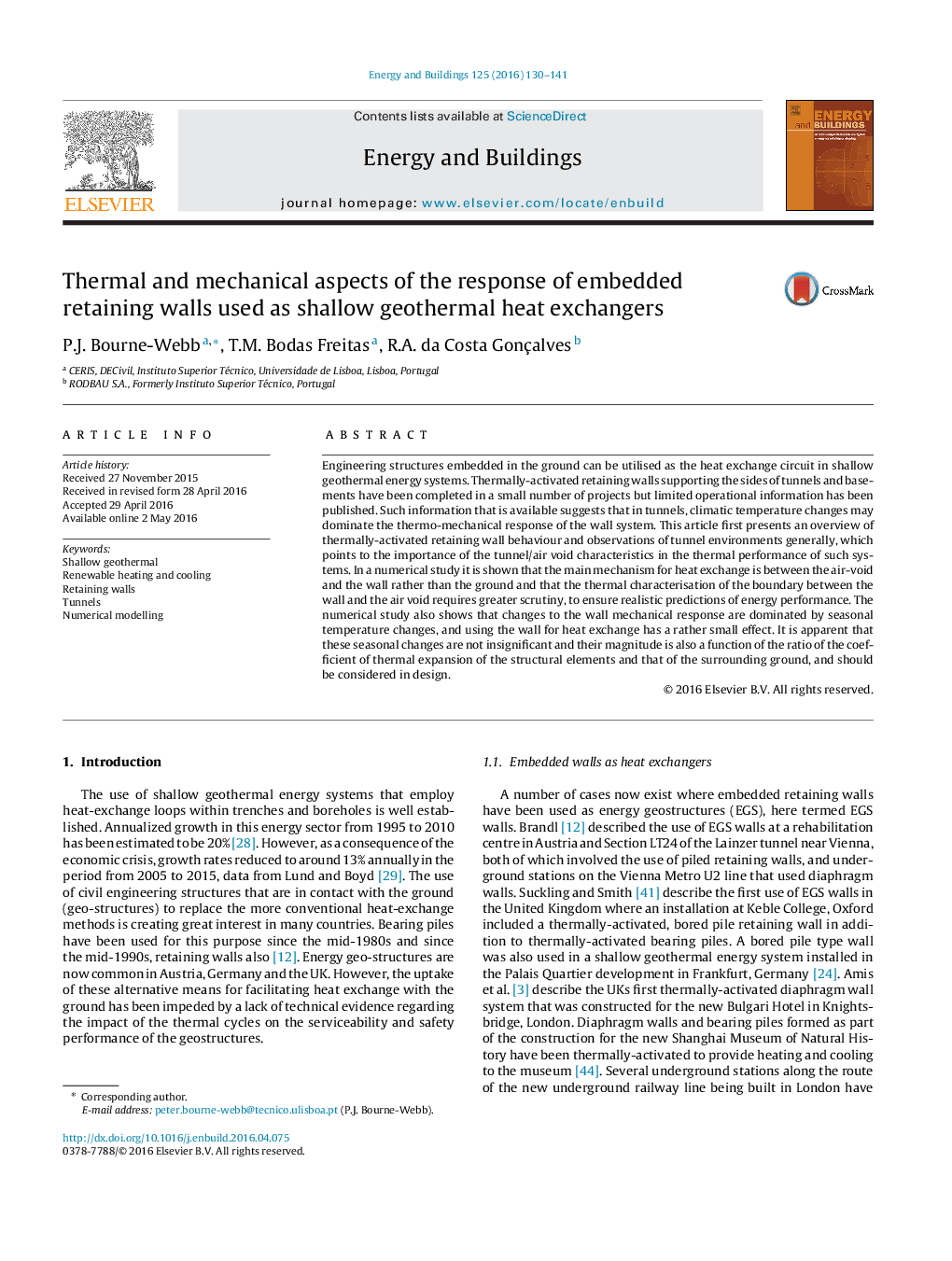| کد مقاله | کد نشریه | سال انتشار | مقاله انگلیسی | نسخه تمام متن |
|---|---|---|---|---|
| 6729928 | 504008 | 2016 | 12 صفحه PDF | دانلود رایگان |
عنوان انگلیسی مقاله ISI
Thermal and mechanical aspects of the response of embedded retaining walls used as shallow geothermal heat exchangers
ترجمه فارسی عنوان
جنبه های حرارتی و مکانیکی پاسخ دیوارهای نگهدارنده جاسازی شده به عنوان مبدل های حرارتی کم عمق زمین گرمایی استفاده می شود
دانلود مقاله + سفارش ترجمه
دانلود مقاله ISI انگلیسی
رایگان برای ایرانیان
کلمات کلیدی
زمین گرمایی کم عمق، گرمایش و خنک سازی قابل تجدید، دیوارهای نگهدارنده، تونل، مدل سازی عددی،
ترجمه چکیده
ساختارهای مهندسی تعبیه شده در زمین می تواند به عنوان مبدل حرارتی در سیستم های انرژی زمین گرمایی کم استفاده شود. دیوارهای نگهدارنده حرارتی حمایت از دو طرف تونل ها و زیرزمین در تعداد کمی از پروژه ها تکمیل شده اند اما اطلاعات عملیاتی محدود منتشر شده است. چنین اطلاعاتی که در دسترس است نشان می دهد که در تونل ها، تغییرات دما در آب و هوا ممکن است بر پاسخ گرمادهی مکانیکی سیستم دیوار تسلط یابد. در این مقاله ابتدا خلاصه ای از رفتار دیوار نگهدارنده حرارتی و مشاهدات محیط های تونل به طور کلی ارائه شده است، که به اهمیت ویژگی های هوای تونل / هوا در عملکرد حرارتی چنین سیستمی اشاره دارد. در یک مطالعه عددی نشان داده شده است که مکانیزم اصلی مبدل حرارتی بین حوض هوا و دیواره به جای زمین است و مشخصه حرارتی مرز بین دیوار و هوای حائل نیاز به بررسی دقیق تر دارد تا پیش بینی های واقعی انجام شود از عملکرد انرژی. مطالعه عددی نیز نشان می دهد که تغییرات در واکنش های مکانیکی دیوار تحت تاثیر تغییرات دما فصلی قرار دارد و استفاده از دیوار برای تبادل حرارت اثر کمی دارد. واضح است که این تغییرات فصلی ناچیز نیست و اندازه آنها نیز عملکرد نسبت ضریب انبساط حرارتی عناصر ساختاری و زمین اطراف است و باید در نظر گرفته شود.
موضوعات مرتبط
مهندسی و علوم پایه
مهندسی انرژی
انرژی های تجدید پذیر، توسعه پایدار و محیط زیست
چکیده انگلیسی
Engineering structures embedded in the ground can be utilised as the heat exchange circuit in shallow geothermal energy systems. Thermally-activated retaining walls supporting the sides of tunnels and basements have been completed in a small number of projects but limited operational information has been published. Such information that is available suggests that in tunnels, climatic temperature changes may dominate the thermo-mechanical response of the wall system. This article first presents an overview of thermally-activated retaining wall behaviour and observations of tunnel environments generally, which points to the importance of the tunnel/air void characteristics in the thermal performance of such systems. In a numerical study it is shown that the main mechanism for heat exchange is between the air-void and the wall rather than the ground and that the thermal characterisation of the boundary between the wall and the air void requires greater scrutiny, to ensure realistic predictions of energy performance. The numerical study also shows that changes to the wall mechanical response are dominated by seasonal temperature changes, and using the wall for heat exchange has a rather small effect. It is apparent that these seasonal changes are not insignificant and their magnitude is also a function of the ratio of the coefficient of thermal expansion of the structural elements and that of the surrounding ground, and should be considered in design.
ناشر
Database: Elsevier - ScienceDirect (ساینس دایرکت)
Journal: Energy and Buildings - Volume 125, 1 August 2016, Pages 130-141
Journal: Energy and Buildings - Volume 125, 1 August 2016, Pages 130-141
نویسندگان
P.J. Bourne-Webb, T.M. Bodas Freitas, R.A. da Costa Gonçalves,
